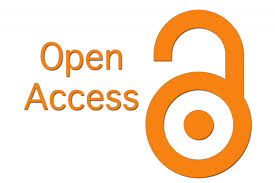RESOLUSI KONFLIK NELAYAN DI PERAIRAN TERITORIAL KABUPATEN KOTABARU
Abstract
Penelitian ini bertujuan: Mengetahui Tipologi konflik, Mengembangkan resolusi konflik dan memetakan kelembagaan resolusi konflik. Penelitian menggunakan metode studi kasus. Data bersumber pada data primer dan sekunder. Pengumpulan data primer dilakukan dengan cara observasi dan metode snowballing melalui key informan. Data sekunder dikumpulkan berdasarkan dokumen-dokumen di masa lalu serta klipping surat kabar. Data dianalisis secara deskriptif, spot mapping, times line. Hasil Penelitian menunjukkan bahwa: (1) Konflik nelayan pada kasus pembagian daerah penangkapan ikan merupakan tipologi yuridiksi perikanan, nelayan masih menganut pola pemmbagian zona daerah penangkapan tradisional. Konflik nelayan pada kasus perbedaan alat tangkap tradisional dan modifikasi termasuk tipologi alokasi internal dan mekanisme pengelolaan. Masalah lainnya adalah adanya perbedaan posisi, kebutuhan, kepentingan, pandangan dan konteks dikalangan nelayan dalam posisi yang sama. (2) Resolusi konflik lampara dasar diselesaikan dengan cara negosiasi secara kekeluargaan, tidak ada kesepakatan tertulis. Resolusi konflik dapat juga terjadi secara avoidance yang berhenti dengan sendirinya berdasarkan kesadaran masing-masing. (3) Lembaga yang terlibat dalam penyelesaian konflik yaitu DKP Kalsel, DKP Kotabaru, INSAN, TNI AL, Polair, Polres/Polsek, WALHI, DPRD, POKMASWAS. Diperlukan teknologi komunikasi informasi yang dapat diterima dengan cepat agar konflik dapat terdeteksi sedini mungkin
The objectives of this study are: finding out the typology of conflict, develop conflict resolution and mapping the institutional conflict resolution. The study used case study method. Data is sourced from primary and secondary data. Primary data collection is done by observation and snowballing method through key informant. Secondary data are collected based on past documents and newspaper clippings. Data were analyzed descriptively, spot mapping and times line. The results of the research show (1) Fisherman conflicts in the case of division of fishing areas is a typology of fishery jurisdiction in which fishermen still adhere to the traditional zone pattern of fishing areas. Conflicts in traditional fishing gear warfare cases and modifications was part of the internal allocation typology and management mechanisms. Other sources of conflict were different positions, needs, interests, views and context among fishermen in the same position. (2) Conflict resolution due to the use of lampara dasar (mini trawl) is settled by means of a familial negotiation, no written agreement. Avoidance is another Conflict resolution, based on their respective awareness. (3) Institutions involved in conflict resolution are DKP Kalsel, DKP Kotabaru, INSAN, TNI AL, Polair, Polres / Polsek, WALHI, DPRD, POKMASWAS. There is a need for information communications technology that can be received quickly so that the conflict can be detected as early as possible.
Keywords
Full Text:
PDFReferences
Adhuri, D.S. Ed. (2005). Fishing in, Fishing out: Memahami Konflik Kenelayanan di Kalimantan Timur dan Nusa Tenggara Timur (p. 122). PMB-LIPI. Jakarta.
Bennett, E., & Neiland, A. (2000). Review of study approach to conflicts (p. 122). Centre For the Economics and Management Of Aquatic Recources (CEMARE).
Gorre, I.R.L. (1999). The basics of appropriate dispute resolution: A Must Read for Coastal Managers. Journal of Tropical Coasts, 6, 3-7.
Hasan, S.Z.S. (1974). A Situational Analysis of Conflict in A Fishing Fillage. Journal of Science. 5, 43-544.
KKP. Kementrian Kelautan dan Perikanan. (2002). Penyusunan Pedoman Pengelolaan Sengketa Pengelolaan Sumberdaya Kelautan dan Perikanan (SDKP) di luar Peradilan melalui mekanisme Alternative Dispute Resolution (ADR). Proyek Pengembangan Kelembagaan Pengelolaan Laut. Jakarta.
Malik, I., Fauzi, N., Wijardjo, B., & Royo, A.G. (2003). Menyeimbangkan kekuatan pilihan strategi penyelesaian konflik atas sumberdaya alam (Ed. Pellokila YK, Prasetyohadi, Trisasongko D). Gram Pruit DG, Rubin JZ. 1986. Sosial Conflict; Escalation, Stalemate and Settlement. Random House. New York.
Morris, D. (2002). Communities, building, authority, responsibility and capacity in the case against the global economy and for a turn toward the local. Editor (Ed.), Jerry Mander and Edward Goldsmith. Tibbra Club Books
Michael, F. (2002). Local communities as learning organization: The Case of The Village of Toro, Sentral Sulawesi. Indonesia.
Ostrom, E. (1993). The sustainable economict. Journal of Science, 56, 14-17.
Pollnac RB. (1984). Investigating Territorial Use Rights Among Fishermen. J Senri Ethnological Studies. 17, 285-300.
Priscoli, J.D. (2002). Participation, consensus building and conflict management training course (p. 179). UNESCO – IHP.
Purwaka. (2003). Bunga rampai analisis pengembangan kapasitas kelembagaan kelautan dan perikanan (p. 37). Fakultas Perikanan dan Ilmu Kelautan. Program Pascasarjana. Tidak diterbitkan.
Rusmilyansari. (2012). Root problem and conflict resolutian of fisheries in sea waters of South Kalimantan. Journal of Coastal Development: 15, 243-251
Rusmilyansari, Rosadi, E., & Apriansyah. (2013). Tipologi konflik sumberdaya perairan di perairan Kalimantan Selatan. Buletin PSP. 21, 247-354.
Satria A. (2004). Konflik nelayan dan otonomi Daerah. Konferensi Nasional IV Pengelolaan Sumberdaya perairan Umum, Pesisir, Pulau-pulau Kecil dan Laut Indonesia. Balikpapan 14–17 Desember. Kalimantan Timur.
Wahyono A. (2000). Hak ulayat laut di kawasan Timur Indonesia (p. 60). Yogyakarta. Media Pressindo. hal.
Yulikasari, T.E., Wisudo, S.H., Monintja, D.R., & Purwaka, T. (2010). Konflik perikanan tangkap di perairan Kabupaten Bengkalis Provinsi Riau. Marine Fisheries Journal Teknologi dan Manajemen Perikanan Laut, 1, 113-210. https://doi.org/10.29244/jmf.1.2.11-20.
DOI: http://dx.doi.org/10.15578/jkpi.11.2.2019.89-99

Jurnal Kebijakan Perikanan Indonesia is licensed under a Creative Commons Attribution-ShareAlike 4.0 International License.
View My Stats
p-ISSN 1979-6366
e-ISSN 2502-6550














